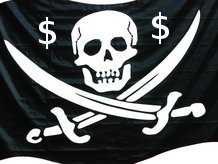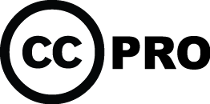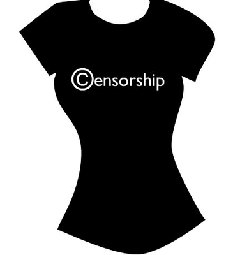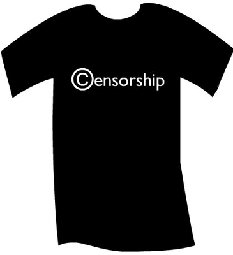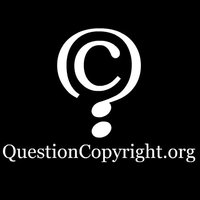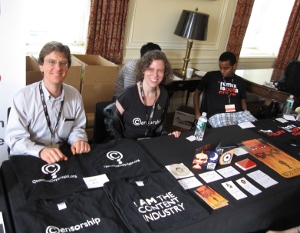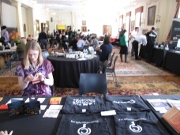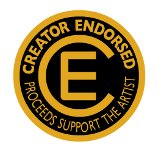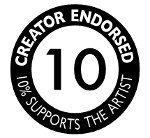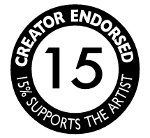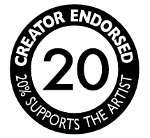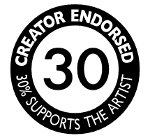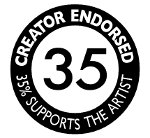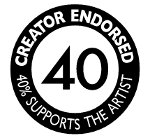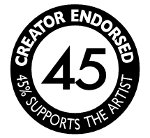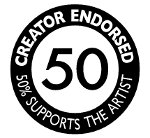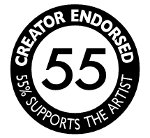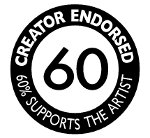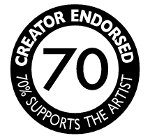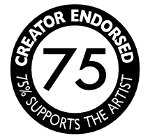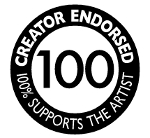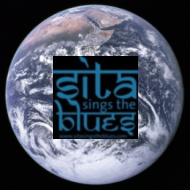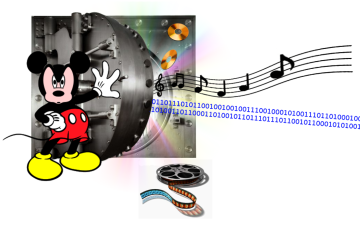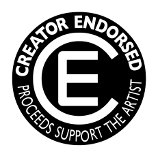
(See also this article at PBS MediaShift about the Creator Endorsed Mark, and this example of the mark being used in commerce.)
The Creator-Endorsed Mark is a logo developed by Questioncopyright.org and first used in June 2009 that a distributor can use to indicate that a work is distributed in a way that its creator endorses — typically, by the distributor sharing some of the profits with the creator. The mark is not an alternative to a free license; rather, it’s meant to be used in conjunction with free licensing. You release your work under a free license, and then grant or withhold permission to use the CE Mark based on how distributors behave.
As more and more creators freely circulate their works on the Internet, the mark provides a reliable way for non-exclusive publishers to signal to their customers that they are supporting the artist. The mark enables consumers to distinguish distributors based on how supportive of the artist they are, and to allow creators to encourage — not necessarily require, but encourage — particular methods of distribution for their freely-licensed work. Our experience is that given a choice, audiences will often prefer sources that support the artist, when they have a reliable way of recognizing such sources.
How it works:
A distributor may only use the mark with permission from the creator of the work, and creators may grant blanket permission to use particular versions of the mark to anyone who meets certain conditions. For example, the creator might say that anyone who shares any profits at all with them can use the generic “proceeds support” version of the mark:

Furthermore, a creator might grant permission to anyone who shares a certain percentage of their profits to use a “percentage” version of the mark, as long as it does not exceed the actual percentage shared. For example, a distributor sharing 25% of profits could use this mark:
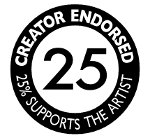
Or an artist might grant permission to use a mark unrelated to revenue-sharing, because she endorses that distributor’s distribution for some other reason:
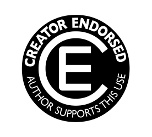
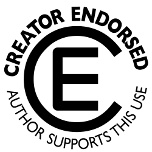
The default terms of the marks (see below) allow certain of these uses without prior permission, as long as reasonable conditions are met and the creator has not explicitly disallowed the use.
The marks come in “artist” and “author” versions:

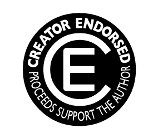
…and in black-on-white versions:
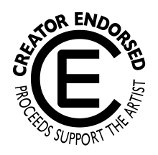
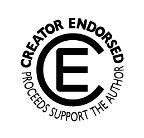
Use and enforcement:
The trademarks for these marks will be registered and held by QuestionCopyright.org (but note that we never charge for use of the marks — anyone may use them under these terms).
We define a “creator” to be the original copyright holder of the work, or in the case of public domain works, the person or entity that held the original copyright.
Any creator is free to grant others use of the marks in connection with the distribution of that creator’s work. Anyone other than the creator is free to use the appropriate mark when distributing works by that creator, so long as the creator has given permission for (“endorsed”) the use in question and the conditions for the mark continue to be met.
The creator may at any time prohibit a particular party from using the marks in reference to that creator’s work(s). (This gives creators a way to avoid being associated with distributors or causes that they do not approve of. The distributor might still distribute the work without the mark, but there will be no implication that the creator endorses that distribution.)
QuestionCopyright.org retains the right to alter these terms or the terms for any particular use in its sole discretion, which it may be likely to do if it finds that the use of the mark(s) is confusing or otherwise misleading.
Nothing in these terms of use grants you permission to distribute a work on terms other than those granted by the relevant copyright holder(s).
You may resize the marks, as long as their vertical and horizontal proportions remain the same, and you may change their foreground and/or background colors.
You are encouraged, but not required, to link back back to this article when using the marks online: http://questioncopyright.org/creator_endorsed.
Enforcement:
If you are a creator and someone is using the marks on your work in a way you disapprove of, please send them a letter telling them to stop, and make sure QuestionCopyright.org gets a copy of that letter (email is fine). If the disallowed use persists, let us know; we will either cooperate with you in enforcing the mark or grant you the necessary legal agency to enforce it yourself.
Credit:
The Creator-Endorsed Mark design was done by Nina Paley.
All available Creator-Endorsed Mark SVG files, by type:

